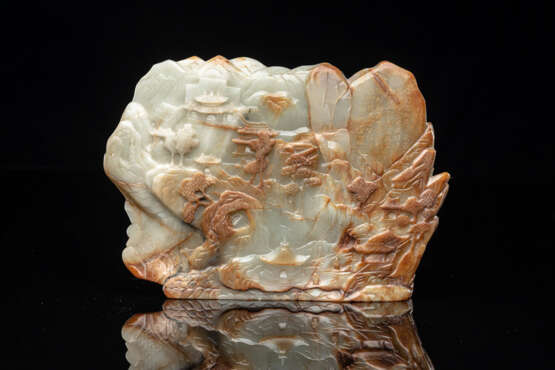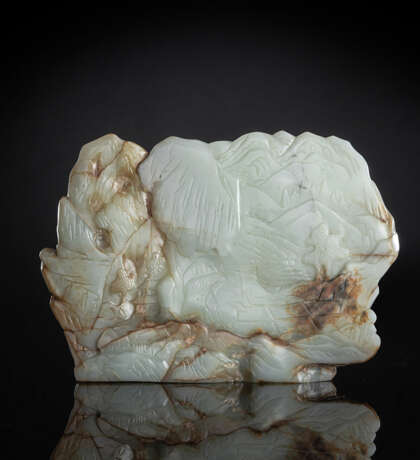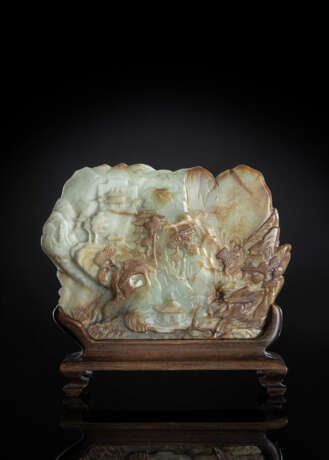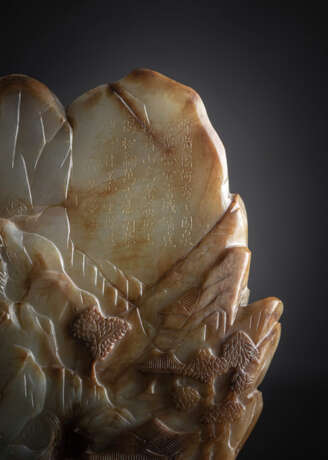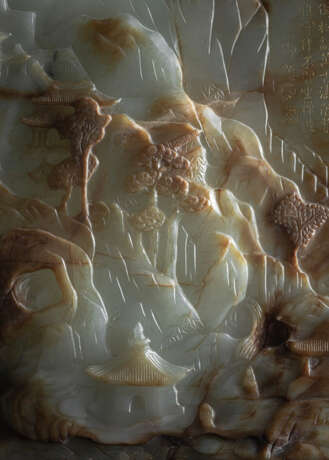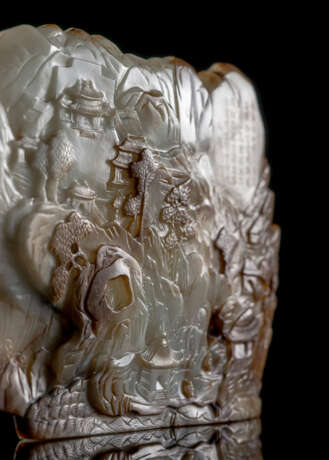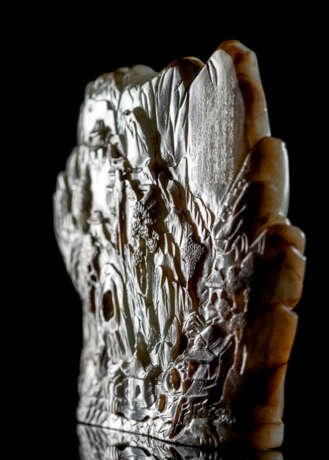Feiner Felsen aus Jade mit Qianlong-Gedicht und Landschaftsdarstellung
06.12.2022 09:30UTC +01:00
Classic
Verkauft
20000EUR € 20 000
| Auctioneer | Nagel Auktionen GmbH |
|---|---|
| Veranstaltungsort | Deutschland, Stuttgart |
| Aufgeld | 29,5% |
Archiv
Die Auktion ist abgeschlossen. Es können keine Gebote mehr abgegeben werden.

ID 875653
Los 449 | Feiner Felsen aus Jade mit Qianlong-Gedicht und Landschaftsdarstellung
Schätzwert
€ 20 000 – 30 000
China, 18. Jh.
16 x 23 x 1,5/2,5 cm
| Kategorie des Auktionshauses: | Asiatische Kunst |
|---|
| Kategorie des Auktionshauses: | Asiatische Kunst |
|---|
| Adresse der Versteigerung |
Nagel Auktionen GmbH Neckarstrasse 189 - 191 70190 Stuttgart Deutschland | ||||||||||||||
|---|---|---|---|---|---|---|---|---|---|---|---|---|---|---|---|
| Vorschau |
| ||||||||||||||
| Telefon | +49 (0)711 649 690 | ||||||||||||||
| Fax | +49 (0)711 649 69696 | ||||||||||||||
| Aufgeld | 29,5% | ||||||||||||||
| Nutzungsbedingungen | Nutzungsbedingungen | ||||||||||||||
| Geschäftszeiten | Geschäftszeiten
|
